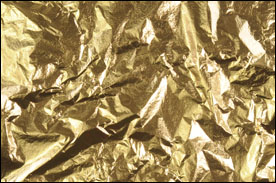Epithermal or Ephemeral?
In March 1997 rumours that Bre-X had apparently not discovered gold at Busang in Indonesia staggered the markets. The downward spiral began on March 18th as reports swept the world that Bre-X geologist Michael de Guzman was missing in the Borneo jungle and presumed dead after falling 240 metres from a helicopter while on the way to meet with Freeport officials. By May 1997 Strathcona Minerals had confimed that core-samples had been salted with placer gold thus confirming rumours and revealing one of the largest frauds in history of any kind.
I happened to be reviewing geological maps of a gold prospect in Tanzania at a geophysical consultancy in Perth, Western Australia when I first heard that Bre-X might be the biggest scam in gold mining history. I was in the offices of Southern Geoscience Consultants in the sleepy, affluent suburb of Applecross when Bill Peters, a founding partner of the consultancy took a call from a geologist working for a client regarding another project. That client was Freeport which was conducting due diligence on Busang with the intention of acquiring a 15 percent stake in the project by committing to provide 25 percent of the funds to cover development costs to a maximum of $400 million and arrange a $2.1 billion financing from Chase Manhattan Bank for the balance. Geologists and the general public were quickly coming to the startling conclusion that there was no gold at the Busang Gold Project in Indonesia, at least in the handful of confirmation drill-holes that had recently been drilled by Freeport in the core of the deposit. A few weeks earlier in Toronto, some 18,000 kilometres away on the other side of the world, at the awards banquet of the annual Prospectors and Developers annual convention, John Felderhof received the “Prospector of the Year” award for having discovered Busang. A peak market value for Bre-X of C$6.2 million, built on the back of reports of a 200 million ounce gold resource and an endorsement of sorts by theToronto Stock Exchange in the form of inclusion of Bre-X in its index, just sublimated into thin air.
Months afterward the Bre-X collapse I was on an Air Zimbabwe flight from Harare to Dar es Salaam when the pilot had to land the ageing Boeing 737 at the airport in Lilongwe because a seal had gone in the port engine. We emerged from the plane into the burning heat of the mid-day sun to spend 13 hours in a newly commissioned, spick-and-span but almost empty terminal where I got talking to a senior mining analyst from Rothschilds in Australia. We talked about Bre-X and the gold that “never was” at Busang. We discussed the warning signs and that independent mining analysts like himself and major mining companies were not allowed by Felderhof to make site visits to Busang. Hindsight maybe 20:20 but I was drawn to think more of the fable of the emperor’s clothes by Hans Christian Andersen and about how so many people who should have known better by just using common sense had not wantied to see what was there because in this case they were overcome with avarice and greed and what they wanted to see.
Why is Bre-X and Busang topical now? Two weeks ago on Wednesday, April 23rd, 17 years after the Bre-X scam, Ontario Superior Court Justice Paul Perelli said in his ruling that the last two class action lawsuits would end because there was no reasonable prospect of recovery. In the aftermath of the giant scam three Canadian public sector pension funds reported major losses including: The Ontario Municipal Employees Retirement Board (loss of $45 million), the Quebec Public Sector Pension fund ($70 million), and the Ontario Teachers Pension Plan ($100 million).
The foundation on which mineral resources are built are mineralised rock samples and the integrity of the analysis. When Chester Beatty evaluated mining projects for the Guggenheims in the first decade of the last century he would take the rock samples himself and keep them in his sleeping bag overnight to prevent anyone from tampering with his bags and their contents.
There were of course frequent scams in mining before Bre-X, it was just that this was by far the biggest. The year before Bre-X was a vintage year because in May 1996 there was Naxos involving proprietary assaying and Cartaway through the hyperbole of visual estimates and the following month there was Timbuktu in June of 1996 . Most astonishingly, or maybe we should have expected it, ten years after Bre-X there was the Southwestern scam in 2007 involving tampering with assay data. It takes a major fraud to galvanise the regulators into action. The Poseidon nickel bubble in Australia in 1969 precipitated JORC and the Bre-X scam resulted in the introduction of NI 43-101 in Canada as a national instrument for the Standards of Disclosure for Mineral Projects within Canada. The concept of an independent Qualified Person (QP) or what we call a Competent Person (CP) on this side of the Atlantic was also embedded in the codefied set of rules.. So now sure isn’t it great that we have a well regulated industry and we can all rest easy. Or can we? What about that Southwestern scam in 2007?
Quality assurance, quality control, sample security and verification of results are reviewed in the independent technical report to give the investor peace of mind. So once we have a technical report prepared by a competent person we should have some comfort. Interestingly in the same year as the Southwestern scam in October 2007 Armando Simon and Greg Gosson of AMEC wrote a piece in CIM Magazine about their experience with numerous audits and due diligence studies and came to a worrying conclusion … that geological quality control programmes are still infrequent. Out of 26 projects only four had established QA/QC programs and with regard to NI 43-101 technical reports AMEC could not find what they considered relevant details on QA/QC programs in half of the technical reports which they consulted on SEDAR. They reported direct experience of “deceptive practices” by laboratories considered to be “professional” and it is the labs which provide the data which is relied upon to build resources and which underpins reports which are in turn relied upon to make considered investments.
When you read “qualifiers” by the Qualified Person (QP) specifically realting to QA/QC such as “appears to be” or “is in the opinion of” or “relied upon” and others such as “industry acceptable manner” or “best practice” it should engender a certain uneasiness if such qualifiers are not substantiated or defined. Too many technical reports written in the dry prescriptive format of the NI 43-101 contain pages upon pages of tedious description leaving what was at first an enthusiastic prospective investor, you would have to be to read through one of these reports, in a forlorn attempt to sift and sieve through the report for what is relevant and important and material for making an investment. Does the QP think that this is a good deposit and why? What is the possibility or probability of success? What are the key risks and mitigating factors combined into a SWOT analysis? It is not much good having a high-grade gold deposit if you can only extract a small amount of the gold. The QP should not just offer a shrivelled statement that the project has the technical merit to warrant further work – what does that mean? It is understandable that the QP is shy and minimalist as he weighs up every forward looking statement as a potential hostage to future litigation. Why would anyone be a QP or a CP anyway? It is an imperfect system. To some extent a “good news” endeavour saddled with the practicality that just like an auditor of accounts the QP is also paid by the Company and not by an independent party. Could there be another Bre-X sting? Our human ingenuity and creativity and capacity for greed and deception can overcome any man-made set of rules. Rather than rest easy the investor should always be vigilant and by all means keep those samples in your sleeping bag.


John: many great comments here and in your other blog messages! Good show!
Going to the 43-101 reporting … as they are now written, these reports do not accomplish the goal as origianlly set: to provide sufficient information and interpretation to allow a knowledgeable investor the ability to make an informed decision as to whether or not to invest (buy stock). The writing style is beyond the comprehension of the non-geologist, non-engineer investor. Perhaps a second “Executive Summary” should be added which is written layman’s language, and concludes with a recommendation which speaks to the investor?
Bob,
I agree entirely. It is very hard for the layman-investor as distinct from an industry technical person to find what he is looking for in a conventional 43-101 and most of the time it is not there.
What does the QP really think of the project? would he invest his own money and what are the mitigating factors which need to be addressed as soon as possible and which could be game changers.
Thanks Bob for your comments
Very thought provoking article and good comment by “PB”.
The knee-jerk reaction to Busang was to set up a system of self-policing and one in which the ‘student marks their own homework’. So that is alright then. We see this in other spheres of life and we are surprised when it does not work too well!
There have always been honest explorers just as there have always been crooks. Fortunately the honest guys far outnumber the crooks but I don’t believe that the current system is effective in the job of identifying the crooks, at least until it is too late. The plucky, innocent investor is separated from their money. Have you heard of a case where they get it back?
As junior explorers we operate in far flung places, often hostile environments, sometimes in questionable jurisdictions.
I recall that the Greeks have a saying: ‘The mountain is very high and the emperor is a long way away’.
Thank you Chris, well said.
Busang was certainly a long way away from the ivory towers of the regulators in Toronto and London and Sydney.
The emperor was a long way away also and might not have been wearing any clothes. QPs and CPs need to be ever vigilant and painstakingly thorough in scrutiny of the underying assay data and from whence it came. Somehow we have to also encourage them to come out and express opinion in these reports based on what should be extensive experience – right now you only need five years of experience in the stule of mineralisation under consideration.
Good article – but crooks are crooks and if Felderhof was around today he would be able to get elevated to the CP level and could write reports. The regulations in place today (in Canada especially) regulate the good guys and have horribly raised the reporting cost to companies, limited information delivery, and have done an injustice to the junior mining marketplace.
Despite the regulations, there are few preventions to another fraud occurring. Crooks are crooks, and if someone salted core boxes and then wrote a certification as a CP he’d get away with it for a time – as Felderhof did.
My sentiments entirely,
thank you for your response